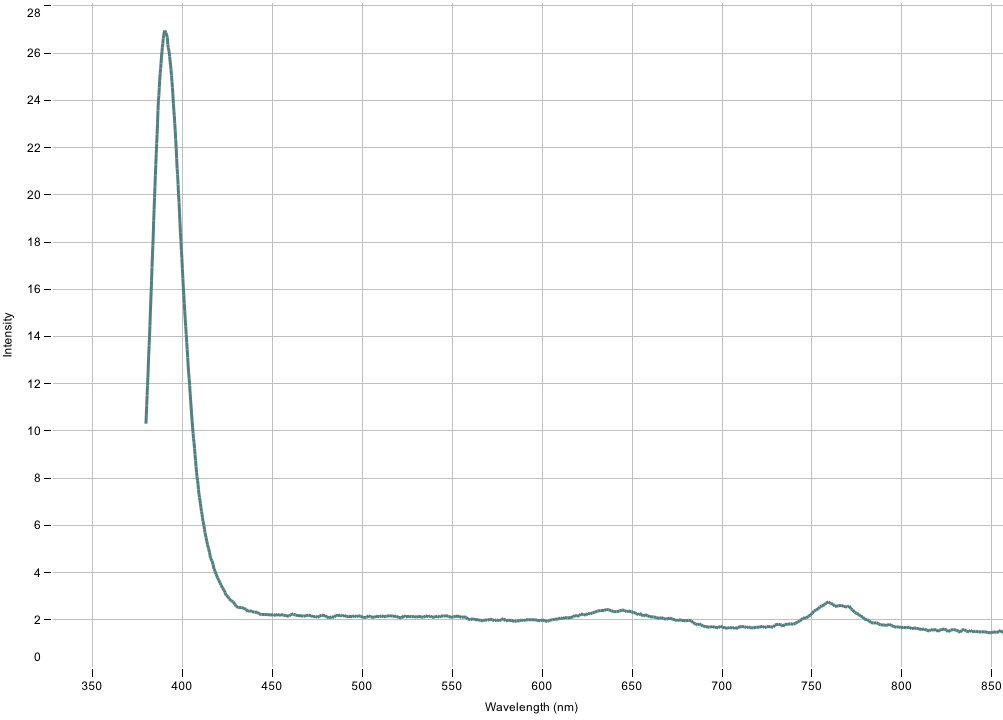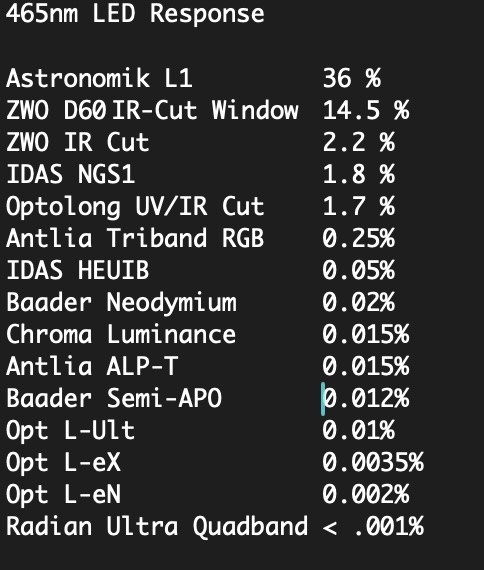There has over time been questions of how much the ASI2600/6200 windows (D60) actually attenuate UV.
The following are some attenuation measurements of filters that I own. I had measured using a 365nm LED pen. 365nm is beyond the range of my Pasco spectrometer , but a 395nm LED pen from the same manufacturer looks like this:

The rig that I had lashed up to make the measurements looks like this:

The LED pen is held by scope rings on the left. The pen is pointed at a camera on the right, though a ZWO filter drawer that holds the 2" filters. The camera on the right is an ASI183MM, with a Fujinon HF-series C-mount lens with a set of Baader ND filters to attenuate the LED pen's light when needed (one ND filter is shown in the photo).
The Table below shows the amount of the LED light that passes through each filter (arranged in the worst to the best). Please note that the majority of these filters do not have UV cut as their primary function, but the table should give you an idea of whether you also need to add a UV Cut filter into the optical path when you use their primary function.
Typically, OTAs that are not "APO" below 400nm often cause a blue halo around stars. A good UV cut filter will usually get rid of this "blue bloat," and many color cameras come with a window that cuts UV because the blue (and even green) components of CMOS sensors are still quite sensitive below 400nm.

The most surprising result is that the (expensive) Astronomik L1 passes a whopping 36% of the UV.
Not surprisingly (because of all the complaints about blue bloats from the ASI2600MC), the ZWO D60 IR-Cut window (ZWO part number D60IR-CUT) comes in second, passing almost 15% of the UV. This window obviously requires an external UV filter.
Next in terms of poor performance is the ZWO IR Cut filter (ZWO part number IRCUT2), passiung 2.2% of the UV. This filter is definitely not recommended if the OTA has a blue bloat problem.
Suprisingly, the Optolong UV/IR Cut filter, whose primary function is to cut both UV and IR, is passing 1.7% of the UV.
The very long-lived IDAS HEUIB-II (HEUIB == Hydrogen Enhanced UV-IR Block) looks pretty good as a UV-IR cut filter, passing only 0.05% of the UV -- this probably expains that after all these years, it is still very popular. The Baader Neodymium is another general wideband filter that cuts UV well, passing just 0.02% of the UV. So is the Chroma Luminance filter, part of their LRGB set, which passes 0.015% -- it probably should be expected because of the cost of Chroma filters -- and definitely lives up to the reputation of the Chroma brand. However, if cutting UV is the aim, the Baader Semi-APO (which specifically meant to cut UV to reduce the blue bloat from mediocre scopes) is as good as the Chroma, at a fraction of the cost.
Most surprising is the Optolong L-series filters (unlike the disappointing Optolong IR-UV cut), with the L-Ultimate, L-eXtreme and L-eNhance all passing noo more than 0.01% of the 365nm UV, with the two latter ones pretty much suppressing UV completely.
From the UV cut aspect, the best filter that I measured is the Radian Ultra Quadband (no longer available due to the demise of OPT, the brands's parent company), living up to its reputation. UV cut is not its primary function, but the amount of UV it passes is below what I was capable of measuring (about 0.001%).
Anyhow, let this post be a warning that the UV suppressing ability of the glass window in the ASI2600/6200 color camera is basically non-existant. If you own one of those cameras, you need to use an external IR-UV cut filter like the Baader Neodymium.
If you are already using an Optolong narrowband filter, you are in luck in the UV department, although the Optolong filters unfortunately have pretty poor halo problems.
Chen